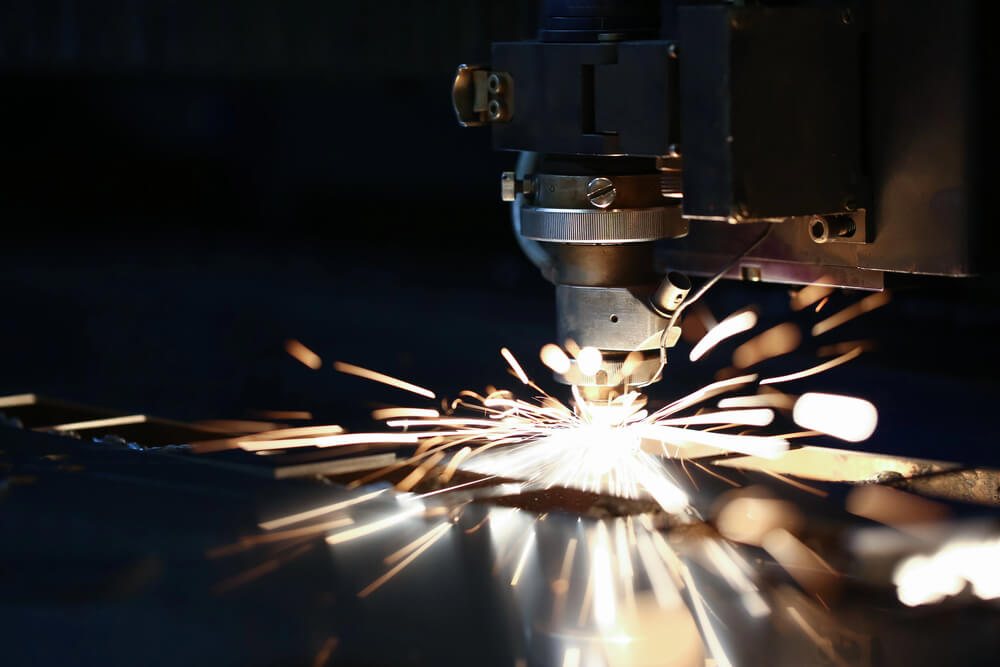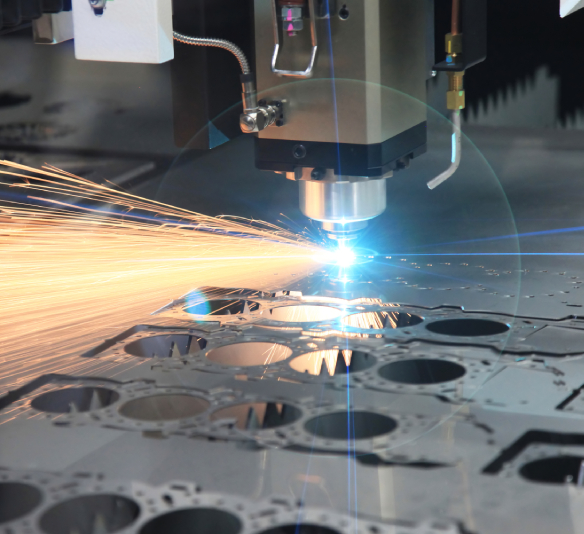In the realm of manufacturing, precision and efficiency are paramount. A laser welding machine offers a refined solution for businesses looking to enhance their production capabilities. This technology stands out for its ability to deliver clean, precise welds with minimal heat input, making it an invaluable tool in various industrial applications.

Laser welding employs a concentrated heat source to fuse materials together, which can range from metals to thermoplastics. The process is highly controlled, allowing for stronger, higher-quality welds compared to traditional methods like MIG or TIG welding. The key advantage lies in its capability to focus energy precisely where it is needed, minimizing distortion, and allowing for intricate work on delicate components.
Understanding the Fundamentals of Laser Welding Machines
Before exploring the selection of a laser welding system, it is crucial to understand its core components and how they influence the welding process. The heart of the machine is the laser source, which can be either a solid-state laser, like a fiber laser, or a gas laser, such as CO2. Each type has its unique properties and suitability for different materials and thicknesses.
The mechanism also includes a focusing system to direct the laser beam, a shielding gas apparatus to protect the weld area from atmospheric contamination, and a control system. The latter is particularly important as it dictates the laser’s power output, duration, and spot size, all of which are critical for achieving the desired welding results.
Control systems in modern laser welding machines offer unprecedented precision. They allow operators to adjust parameters in real-time, ensuring optimal performance across a range of materials and applications. This adaptability not only enhances the quality of the welds but also boosts productivity by reducing the need for post-weld finishing.
Choosing the Right Laser Welding Machine for Your Needs
Selecting the ideal laser welding machine can feel like navigating through a maze of technical specifications and marketing jargon. However, the decision becomes clearer when you align your specific needs with the capabilities of various machines. Here are some practical considerations to guide you in choosing a system that not only fits your requirements but also enhances your manufacturing efficiency.
- Consider the Material and Thickness
The first step in choosing a laser welding machine is to consider the type and thickness of the materials you intend to weld. Different lasers perform better with certain materials. For instance, fiber lasers are excellent for welding metals due to their high energy density, which is perfect for deep welds on stainless steel or aluminum. On the other hand, CO2 lasers might be preferable for thicker materials or for applications requiring smoother welds.
- Evaluate the Power Requirements
Power output is a critical factor in laser welding as it determines the speed and depth of the welds. Machines with higher power are capable of faster welding speeds and can handle thicker materials. However, they also require more energy and can be more expensive to operate. It is important to balance the power capabilities of a laser with your actual needs to avoid overinvestment in unnecessary specifications.
- Look for Precision and Control Features
Modern laser welding machines offer advanced features that enhance precision and control. Features like pulse shaping, real-time power feedback, and adjustable beam quality can significantly affect the quality of welds, especially on complex or delicate components. These features allow you to fine-tune the welding process, ensuring that each weld is consistent and meets quality standards.
- Assess Machine Usability and Training
Ease of use is another crucial factor, particularly if your team is new to laser welding. Look for machines that are user-friendly with intuitive controls and automated features that simplify the welding process. Additionally, consider the training and support provided by the manufacturer. A company that offers comprehensive training sessions, like XCEL Laser, ensures that your team can maximize the capabilities of the laser welding equipment effectively.
Applications of Laser Welding in Manufacturing
Laser welding is not just about joining two pieces of metal; its applications are as diverse as the industries it serves. From aerospace to fine jewelry, laser welding plays a pivotal role in manufacturing. Let us explore some of the applications where laser welding truly shines.
- Automotive Industry
In automotive manufacturing, precision is non-negotiable. Laser welding provides the ability to produce strong, reliable welds that are crucial for the structural integrity of vehicles. From the engine components to the gearbox, laser welding helps in creating lightweight, durable parts that comply with stringent safety standards.
- Electronics and Micro-Welding
The electronics industry benefits immensely from the precision of laser welding. For instance, in the production of batteries and microelectronic devices, laser welding ensures clean, precise connections that are essential for the functionality and reliability of these products. The ability to control the heat input precisely prevents damage to sensitive components, making it ideal for electronics manufacturing.
- Medical Device Fabrication
The medical industry requires absolute precision and reliability in its components. Laser welding is used to create surgical instruments, implants, and other medical devices with exacting specifications. The sterility and precision of laser welding are crucial for medical applications, ensuring that devices perform reliably under critical conditions.
Maintenance and Long-Term Benefits of Laser Welding Technology
Investing in a laser welding machine is a significant step toward advancing your manufacturing capabilities, but it is equally important to consider the long-term operation and maintenance of this sophisticated equipment. Proper maintenance not only extends the life of the machine but also ensures consistent performance and reliability.
- Regular Maintenance Ensures Optimal Performance
Like any high-precision tool, a laser welding machine requires regular maintenance to perform at its best. Routine checks and cleaning of the laser optics and mirrors are essential to prevent power loss and maintain the quality of the welds. Additionally, monitoring the laser source and replacing consumables, such as lenses and nozzles, can prevent unexpected downtime and maintain efficiency.
- Software Updates and Calibration
Technology evolves rapidly, and keeping your machine’s software up-to-date is crucial for taking advantage of the latest improvements and capabilities. Regular calibration is also important, especially after replacing parts or when shifting to different types of projects. These practices ensure that the machine continues to operate according to the precise specifications required for your applications.
- Training and Expertise
Continued education and training for your team are invaluable. As they become more proficient with the laser welding machine, they can optimize its use, explore its full potential, and improve overall production efficiency. Knowledgeable operators can make a significant difference in the quality of output and the innovative application of the technology in new areas of your business.

Long-Term Benefits of Adopting Laser Welding
Adopting laser welding technology offers several long-term benefits that can transform your manufacturing processes:
- Increased Production Speed and Efficiency: Laser welding is much faster than traditional welding methods, significantly reducing cycle times and increasing throughput.
- Enhanced Product Quality: The precision and control provided by laser welding lead to higher-quality welds with reduced defects, which means less rework and higher customer satisfaction.
- Versatility: Laser welding can be adapted for a variety of materials and thicknesses, making it a versatile tool in your manufacturing arsenal.
- Energy Efficiency: Compared to conventional welding techniques, laser welding is more energy-efficient, helping to reduce operational costs over time.
XCEL Laser’s Role in Advancing Laser Welding
At XCEL Laser, we leverage our deep-rooted knowledge from our parent company, MFR Manufacturing Corp, which has been incorporating laser technology into its manufacturing processes for over three decades. This hands-on experience with laser technology directly informs the development and refinement of our laser welding systems.
Our commitment is to provide machines that are not just tools, but partners in production. We focus on equipping our clients with laser welding machines that are easy to learn, energy-efficient, and capable of executing welds with remarkable speed and accuracy. By focusing on the real-world applications of our clients, we ensure that our machines meet and exceed the diverse needs of the manufacturing industry.
Laser welding machines represent a pivotal investment in the future of manufacturing. Whether it is removing rust with a laser cleaning system or achieving precise cuts with laser cutting, the versatility of laser technology continues to expand its utility across various industries. With the right machine, maintenance practices, and operator expertise, you can achieve remarkable improvements in production efficiency and product quality, ensuring a competitive edge in your industry.
